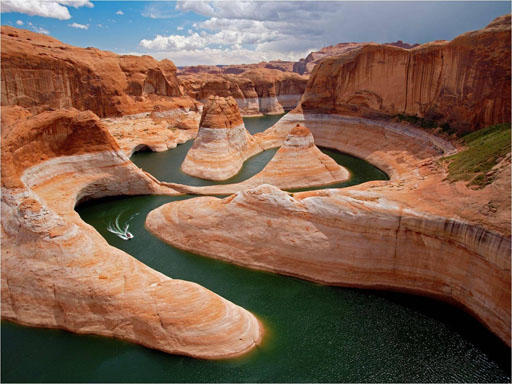
Arizona's drought isn't nearly as bad as the drought in California, but Arizona depends heavily on the water from the Colorado River. Lake Powell (on the left) is one of the reservoirs for the Colorado River. You can see that the water is much lower than the high water mark on the canyon walls.\
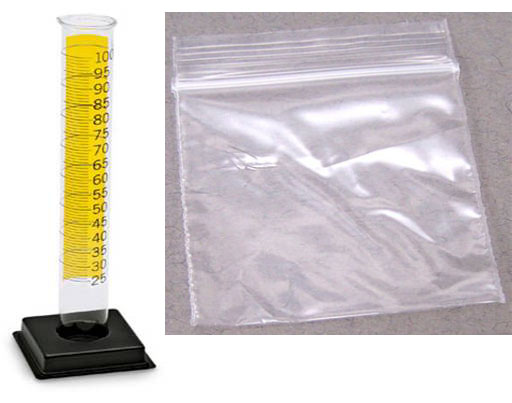
The equipment needed for this field lab is simple. Two gallon-size ziploc plastic bags and one 100 mL graduated cylinder.
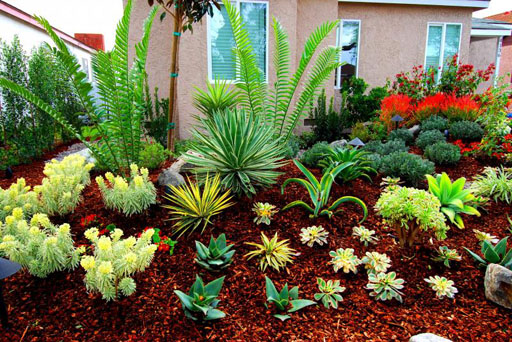
Objective 1: Learn about the importance of drought-toleratant plants and how to identify those plants that conserve water.
Living in the desert with limited water means we need to be smarter in choosing plants for landscaping.
All of the plants in the photo are drought-tolerant, yet they look quite good. There's no real need to use plants that need a lot of water to have a nicely landscaped yard.
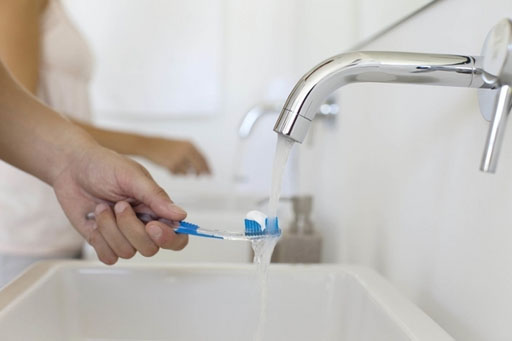
Objective 2: Learn that wasting a little water can add up to wasting a lot of water.
We often leave water on when brushing teeth or waiting for the water to get hot in the shower or sink. It doesn't seem like much but can add up to more than we think.

Transpiration: "Trans" meaning "across" and "spiration" meaning "breathing."
A plant transports water and nutrients from the roots to the leaves by "breathing out" water through pores under the leaves. Plants with large leaves usually give off much more water than plants with small or no leaves.
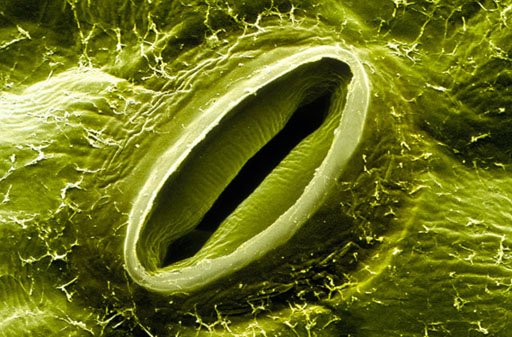
 The stomata also allow carbon dioxide (CO2) to enter the leave and oxygen (O2) to exit the leaf. The plant uses CO2 along with sunshine to build sugars (photosynthesis). Oxygen is produced as a result of photosynthesis.
The stomata also allow carbon dioxide (CO2) to enter the leave and oxygen (O2) to exit the leaf. The plant uses CO2 along with sunshine to build sugars (photosynthesis). Oxygen is produced as a result of photosynthesis.
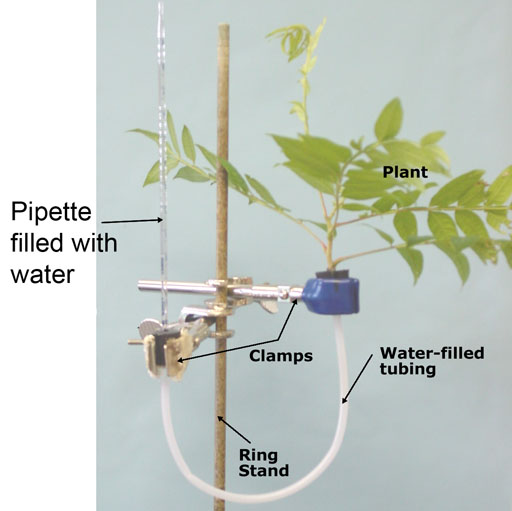
Measuring Transpiration method #1:
One way to measure the amount of water a plant gives off is with a setup like shown. A graduated pipette (one with markings) is filled with water and connected to a cutting of a plant with some tubing. The plant will absorb water from the tubing and transport the water to the leaves where the water will evaporate. Over time the level of water in the pipette will drop. This allows you to measure how much and how fast the plant is transporting water to the air (transpiration).

Measuring Tranpiration method #2:
Another way transpiration can be measured is by placing a plant in a pot and then wrapping the base of the plant so no water can escape from the soil or pot. The wrapped plant is then weighed. After waiting a few hours or a day or so, the wrapped plant can be weighed again. The loss of mass is the amount of water the plant transported from the roots to the leaves and evaporated through the stomata.
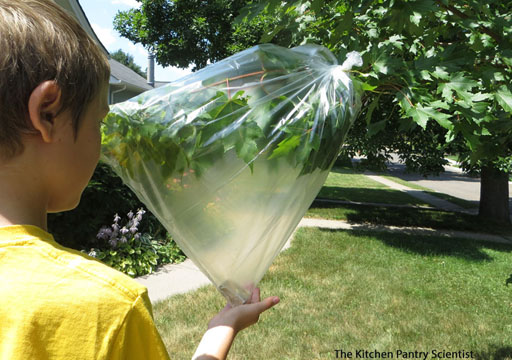
Detecting Transpiration:
A quick way to see that a plant is actually releasing water through its leaves is to place a plastic bag around all or part of the plant. Here the boy sees the water that collected at the bottom of a bag that had been wrapped around some leaves on a tree.
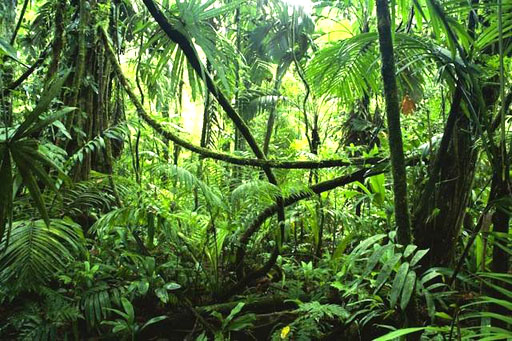
Plants with high transpiration:
Plants that grow in a rain forest often have broad leaves which help them evaporate more water from their leaves even when humidity is high. By evaporating more water, they can bring more nutrients up into the plant and therefore grow faster.
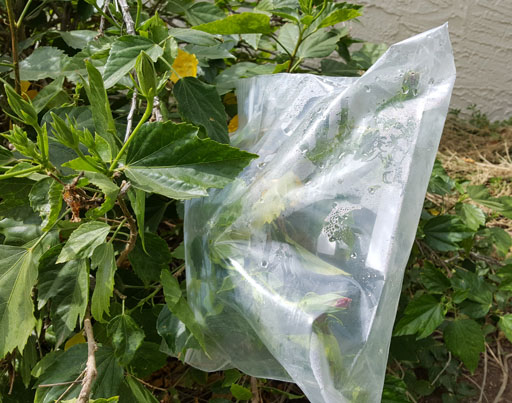

Plants affect weather:
Plants can put so much water into the air that clouds will form. In other words, plants can affect the weather by causing more rain and more soil errosion.


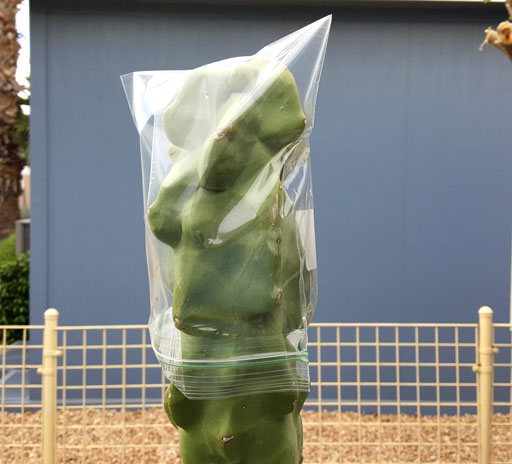
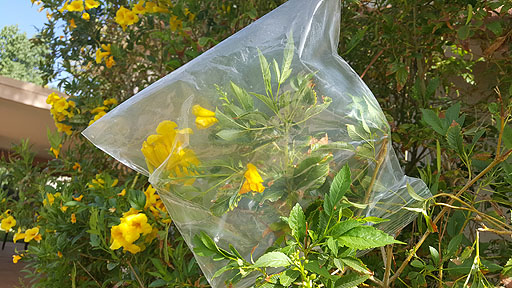
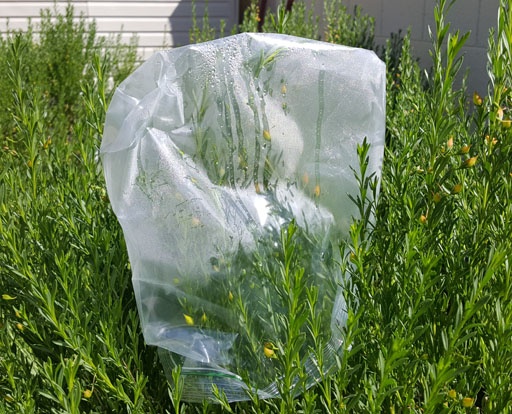
This lab works best during the daytime.
Place the bag over the plant and use the ziploc seal to close up the bottom of the bag as much as possible. Do that for both plants. After about an hour, you can come back and check to see if water droplets have formed. It's also OK to leave the plastic bag on them the whole day then check on which plant released the most water.
A1) For your lab report, either take a photo of the bags on the plants, or describe how much water you saw inside of the bag, and the names of the plants (if you know their names). If you take photos, email them to chm107@chemistryland.com.
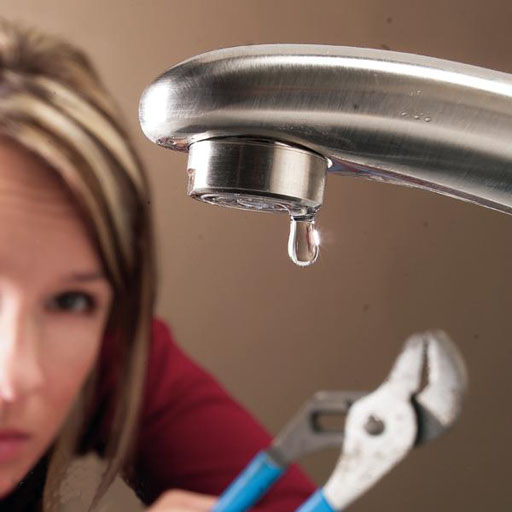
Leaky faucet:
We've all probably experienced the nuisance of a leaky (drippy) faucet either in the kitchen, bathroom, or outside faucet. Our desire is to fix it, but we then consider the cost and time of the repair. So often, we just let it go on dripping.
For this lab, you will measure how much water a drip actually adds up to over a period of time.

Set Rate of Drip:
Open the faucet just enough to make a drip. Set time between drips just slow enough that you may choose to ignore it. For me, it was a drip about every two seconds. Any faster than that, I would feel compelled to fix it myself or have someone else fix it. If the time between the drips were two seconds or longer, I didn't feel much urgency to bother with it. The time of drips for you might be longer or shorter than two seconds. So set the rate of drips to your tolerance level. The photo is from the website of Steve's Plumbing up in Seattle.
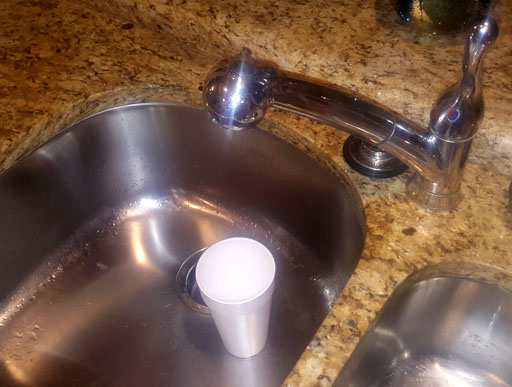
Check the start time that you place a cup under the faucet to catch the water.
Then you will wait until the cup gets about 1/4 cup full. For me, it was 10 minutes after I placed the cup under the drip. I then shut off the drip.
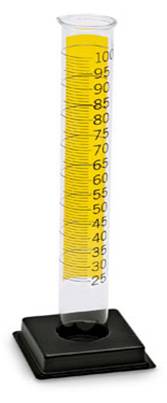
Measure Water from the Drips:
You will use your 100 mL graduated cylinder to measure how much water was in the cup. When I poured the water from the cup into the 100 mL graduated cylinder, I measured it as 85 mL (milliliters). If your cup has more than 100 mL of water, fill the graduated cylinder up to 100 mL, then pour it out but make a mental note that it filled it once. Then add the rest of the water to the graduated cylinder. Add the amounts to get the total amount of water that was in the cup.
B1) What was the volume of water you measured that came from the drip?
B2) How long did you collect the drips?
Calculate the amount of wasted water:
When you have a leak that you ignore, you may tell yourself you need to wait until the weekend to take care of it, or that you need to wait until your next paycheck. So let's calculate the amount of water that goes down the drain in one week when dripping at the rate that I discovered I might ignore. We also want to know the amount of water in gallons rather than the milliliters that we measure. See below for math setup.
The rate of drip I had was 85 mL every 10 minutes (85 mL per 10 minutes) or (85 mL / 10 minutes). That can be written as the first fraction below. To convert from minutes to hours, we multiply by 60 minutes per hour. Then to change hours to days, multiply by 24 hours per day. Then multiply by 7 days per week. Finally we look up how many milliliters (mL) are in a gallon and find out it is 3785. We put 1 gallon on top and 3785 mL on the bottom because that will cause the mL in "85 mL" to cancel out. To do the math, multiply all of the top numbers then divide by 10 (from 10 minutes). Then divide that answer by 3785. The answer with my data is 22.6 gallons per week.
85 mL x 60 min x 24 hours x 7 days x 1 gallon = 22.6 gallons
10 minutes 1 hour 1 day 1 week 3785 mL 1 week
For your lab report, use the mL of water that you measured plus the time to drip that much water and redo the above calculations with your data.
B3) From your calculations, how many gallons of water per week would this drip waste?
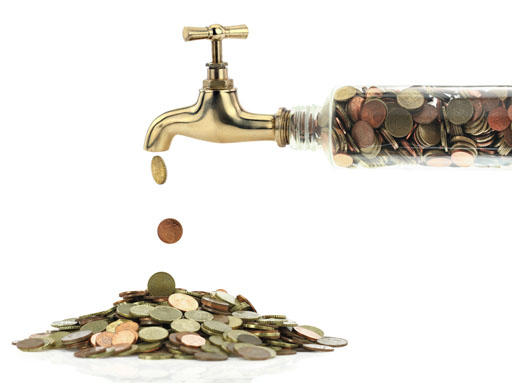
The good news is that a drip like the one I created would not cost much. If it was a leak on the hot water side of the faucet, a loss of 22.6 gallons of hot water would cost about 50 cents worth of electricity. The cost of the water would only be about 3 cents.
If the leak was a small stream of water, instead of a drip of water, it could add up to 100 dollars or so.
The real costly leaks are those that are hidden under the sink or in the wall. They can lead to mold and the need to replace wood and drywall.

Here is an example of mold growing on the drywall where there was a leak in the plumbing in the wall.
If you wish, you can copy the below summary into your email (or Word document) and type your answers after the descriptions. Be sure to title the email "Field Lab 4". Send email to chm107@chemistryland.com. Or you can send the data via Canvas.
A) Detecting Transpiration in Plants
A1) Photo of the bags on the plants (after they've been on there for at least an hour), or describe how much water you saw inside of the bag, and the names of the plants (if you know their names).
B) Volume of Water from Leaks
B1) What was the volume of water you measured that came from the drip?
B2) How long did you collect the drips?
B3) From your calculations, how many gallons of water per week would your drip waste?
Post-Lab questions and problems are on the Sapling Learning website. Those are graded automatically, so you will get your score on your Post-lab questions as soon as you finish them. http://www2.saplinglearning.com/